The first (and largest) was fairly obviously Pogonognathellus longicornis:
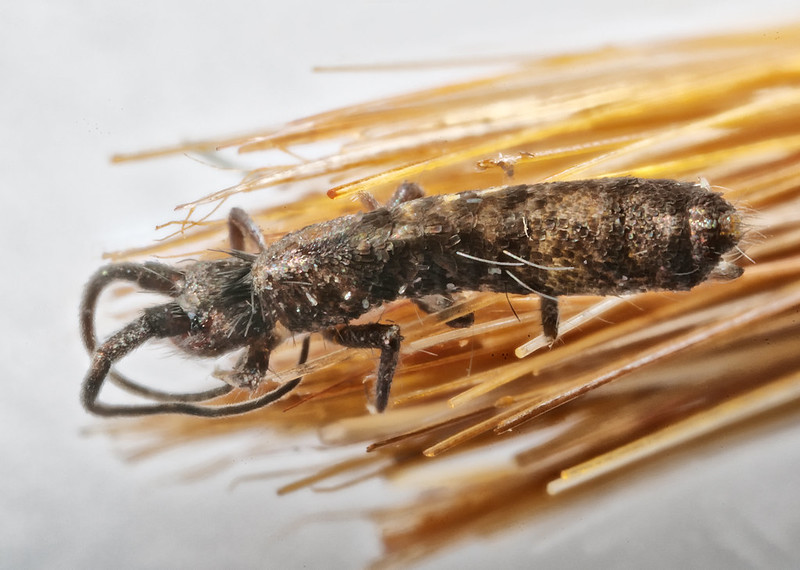
However, as the antennae were broken, I confirmed this by looking at the structure of the foot. In P. longicornis, the empodium is about 1.2 times as long as the claw due a thin filament on its tip (P. flavescens has no filament on any empodium):
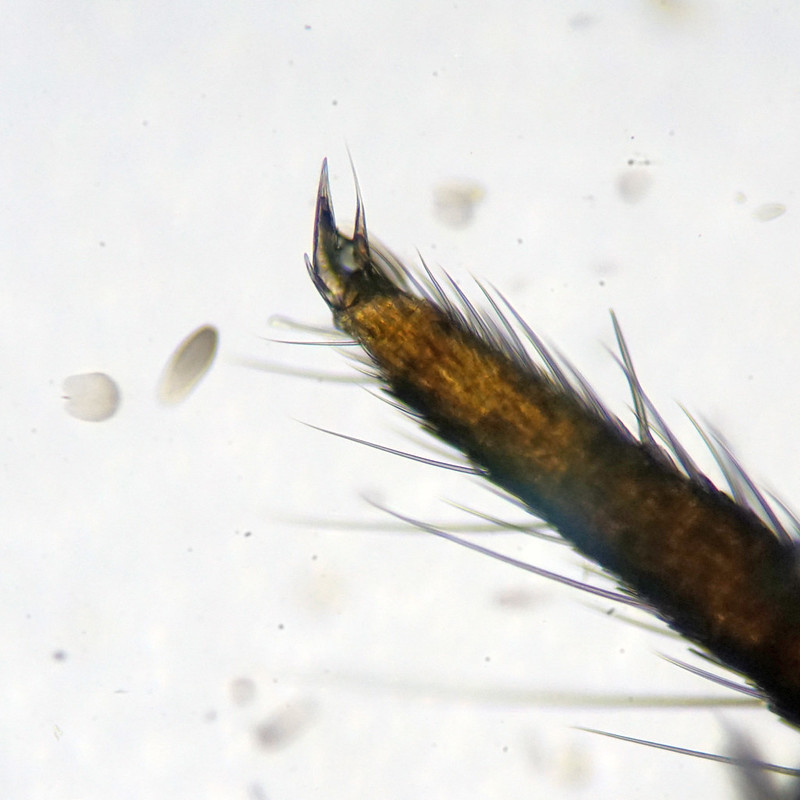
The medium-sized specimen had some transverse banding on each segment and I thought it could be Tomocerus vulgaris:
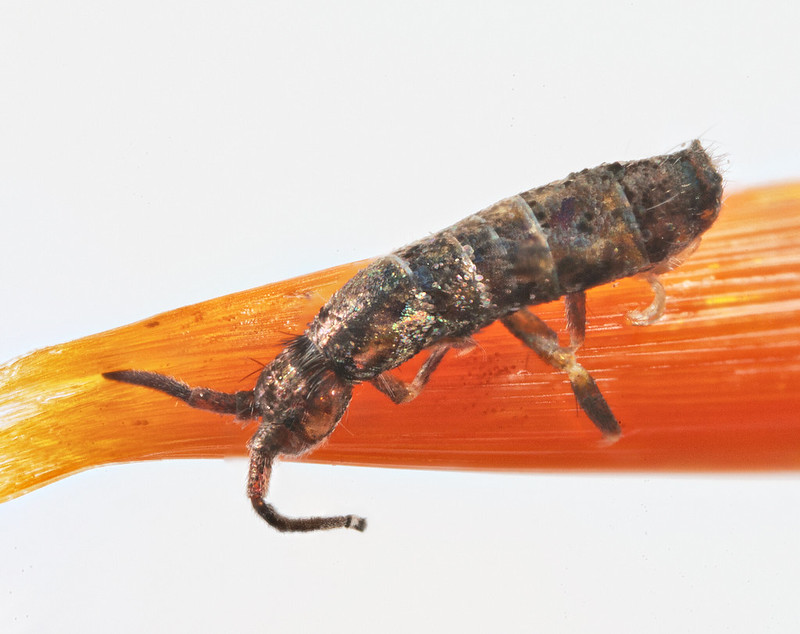
To confirm this, I checked the structure of the spines on the dens of the furcula. Although this isn't the best picture, the spines were simple (not tridentate as in T. minor) so this is indeed T. vulgaris:
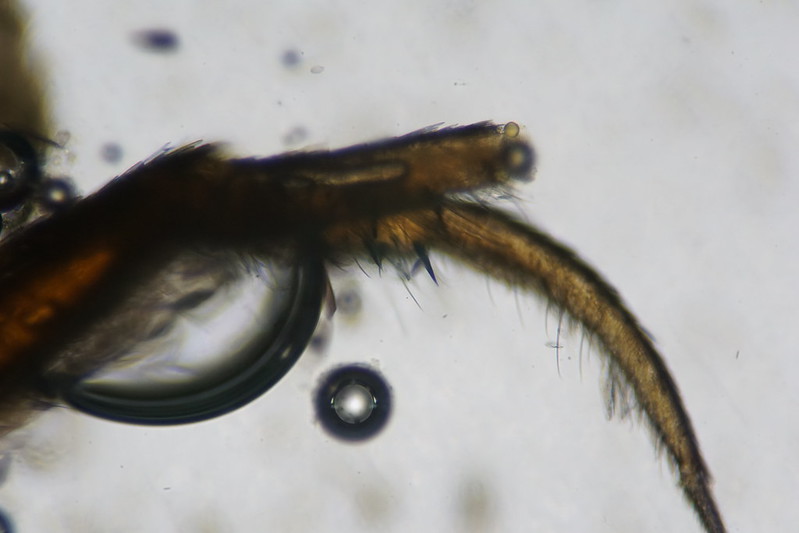
I guessed that the smallest specimen was probably Tomocerus minor:
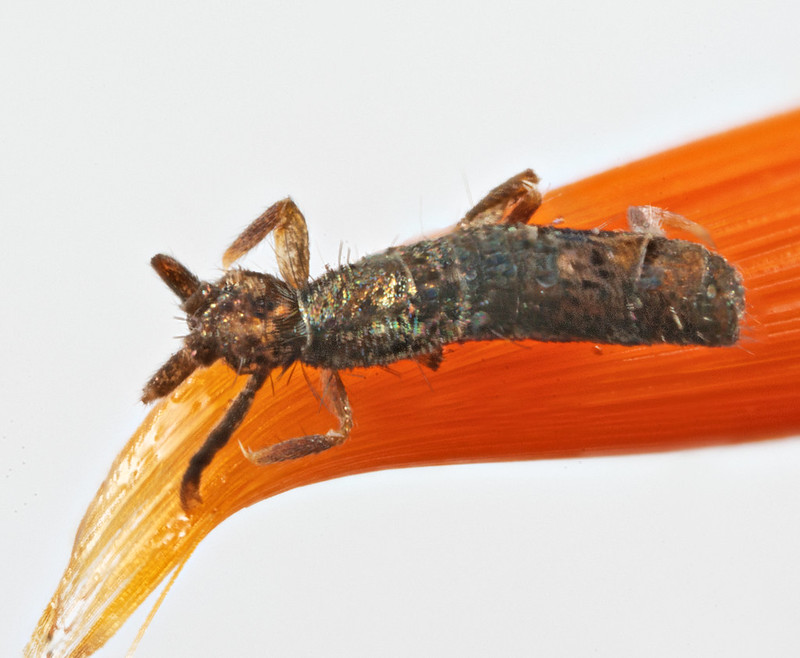
Indeed, it had tridentate spines on the dens of the furcula, confirming the I.D.:
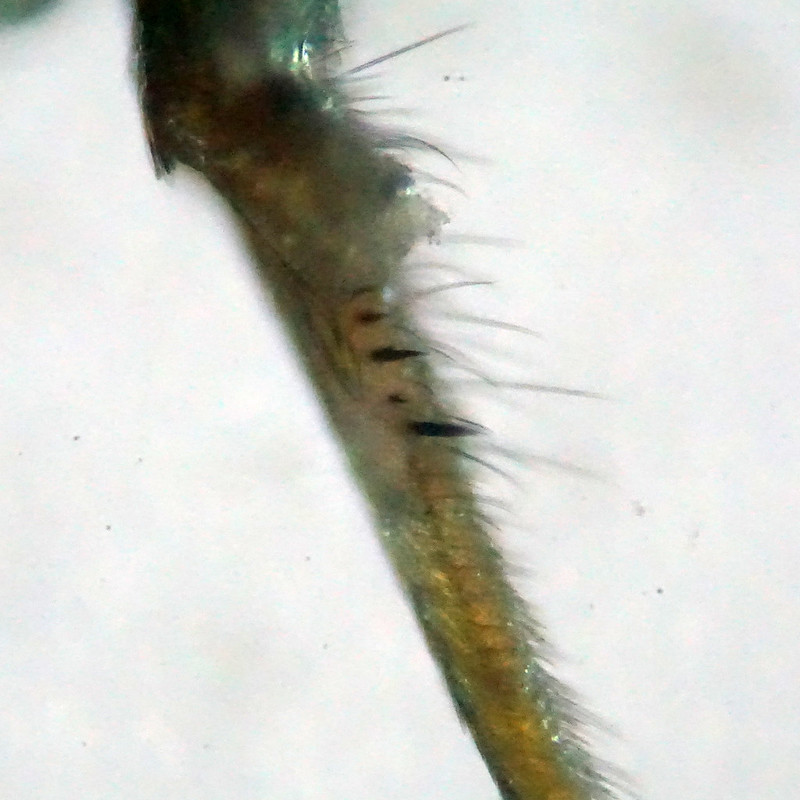
Three very common species, but now formally recorded in an area of Leicestershire where no-one has ever recorded any springtails before! They're out there!
No comments:
Post a Comment
Comments welcome, I will respond as soon as I can.
Note: only a member of this blog may post a comment.